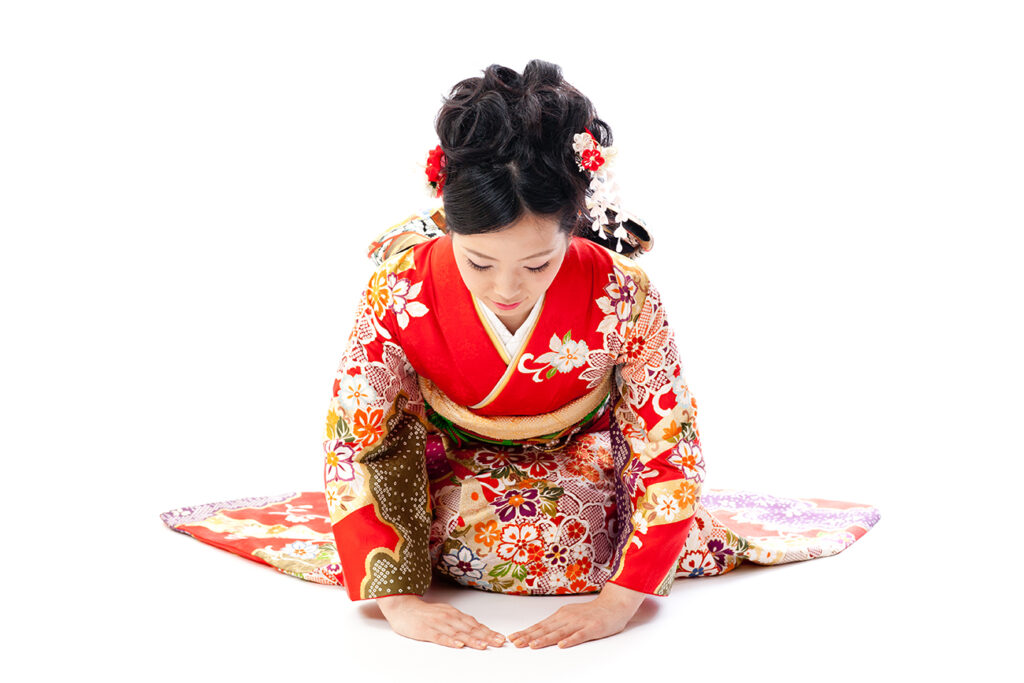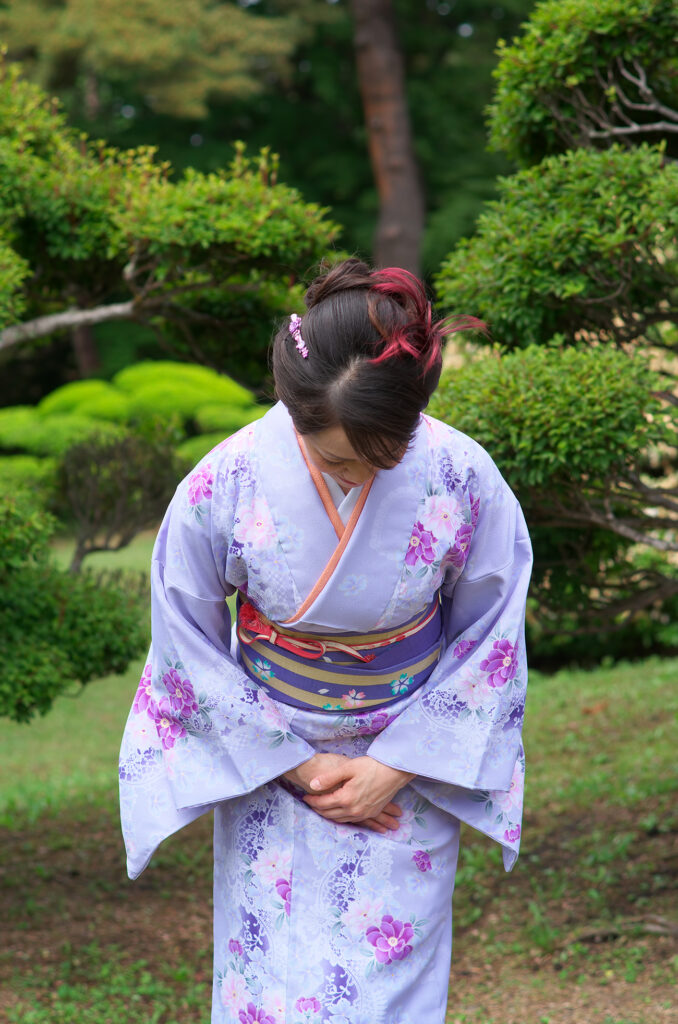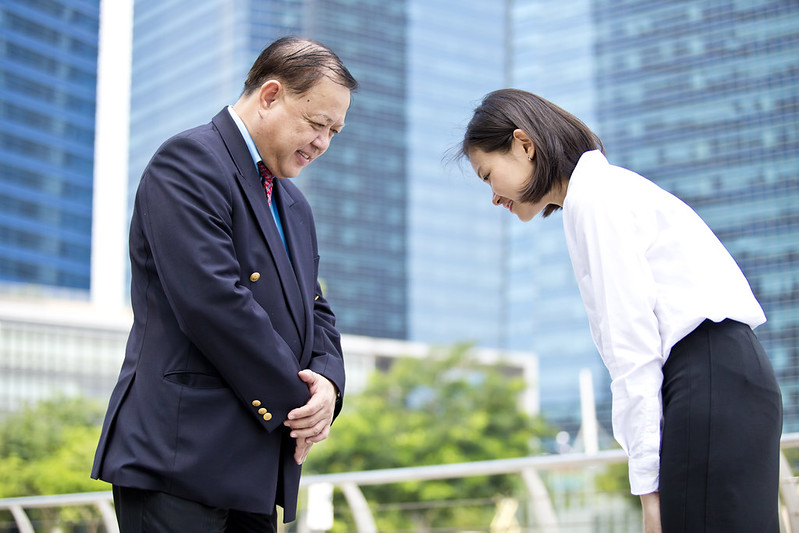
Bowing: An Essential Form of Japanese Etiquette
Bowing is integral to Japanese etiquette and heritage. From a young age, everyone in Japan is taught the art of bowing and continues to refine this skill throughout their lives. Mastering the proper technique of bowing holds significant importance, particularly in formal environments like workplaces and business settings.
What cultural meaning lies behind the Japanese tradition of bowing?
Ojigi (お辞儀) is a comprehensive term in Japanese culture that encompasses various types of bows used in different contexts. This can range from a simple nod of the head in informal situations to the more formal bows observed in ceremonial settings.
 Bowing is a fundamental aspect of Japanese etiquette, serving as a gesture of greeting, respect, gratitude, apology, or other sentiments. The tradition of bowing is deeply rooted in Japanese culture and carries nuanced meanings depending on the situation and the depth of the bow.
Bowing is a fundamental aspect of Japanese etiquette, serving as a gesture of greeting, respect, gratitude, apology, or other sentiments. The tradition of bowing is deeply rooted in Japanese culture and carries nuanced meanings depending on the situation and the depth of the bow.
In formal environments such as ceremonies, rituals, or business meetings, bowing holds significant importance. It often follows a prescribed protocol, reflecting the seriousness or solemnity of the occasion. In certain companies, employees may receive formal training on bowing etiquette, highlighting its integral role in workplace manners. This cultural practice is so deeply ingrained that individuals might instinctively bow while speaking on the phone, even if the other party cannot see this gesture.
Three types of ojigi
In Japan, different types of bows are employed based on the specific context, and performing the wrong bow can lead to confusion or offense. Therefore, it is essential to understand and execute the appropriate type of bow. Here are three key types of bows used in Japanese business etiquette:
Eshaku (会釈)
Eshaku is a simple and casual bow where one bends the torso approximately 15°. It is typically used for greeting colleagues of equal status or in relaxed work environments. Eshaku is performed swiftly but not hastily.
Keirei (敬礼)
Keirei is a formal bow used to show respect. It involves bending at a 30° to 45° angle from the waist. Keirei is commonly used in business settings, ceremonies, or when showing respect to superiors or elders. The depth of the bow signifies the level of respect, and to convey sincerity, one should hold the bow for a moment.
Saikerei (最敬礼)
Saikerei is the deepest and most formal bow, reserved for highly solemn occasions or when showing utmost respect, such as in ceremonial or dignitary contexts. It requires bending deeply at the waist to a 45-degree angle or further, with the arms straight and hands placed flat on the thighs or knees. Saikerei is performed selectively due to its profound significance and should not be executed in inappropriate situations to avoid unintentional offense.
Additionally, another notable form of bowing in Japanese culture is Dogeza (土下座). Dogeza is an extreme bow performed while kneeling on the ground, often used as a gesture of apology or extreme reverence. It involves touching the forehead to the floor, with the hands and elbows placed on the ground in front of the body.

